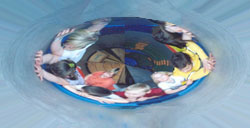Repeatability of lower leg mechanics during gait in Parkinson’s disease
Aim of this work was to study the repeatability of kinematic and kinetic parameters of gait in Parkinson’s disease patients. Twelve patients with Parkinson’s disease performed 10 repeated gait trials at their natural speed on two different days. Lower limb kinematics were recorded by a Vicon optoelectronic system, with 6 cameras at a sampling frequency of 100Hz. Two Kistler force plates were placed in the middle of the walkway, to record the ground reaction forces with a sampling frequency of 1000Hz. The repeatability of the mechanical characteristics was estimated by the Coefficient of Multiple Correlation (CMC) for within-day and between-day measurements. The results showed high repeatability (CMC>.95) of the joint angle waveforms in all lower limb joints except pelvis (CMC>.77). The repeatability of joint moments was greater at the ankle joint (CMC>.98) and smaller at the hip joint (CMC >.90). In conclusion, most mechanical parameters of gait in patients with Parkinson’s disease show significant repeatability. However, during gait analysis of Parkinson’s disease patients, the minimum number of trials, which ensure very good reliability, should be performed, to avoid patients’ fatigue.
Repeatability of lower leg mechanics during gait in Parkinson’s disease Read More »






